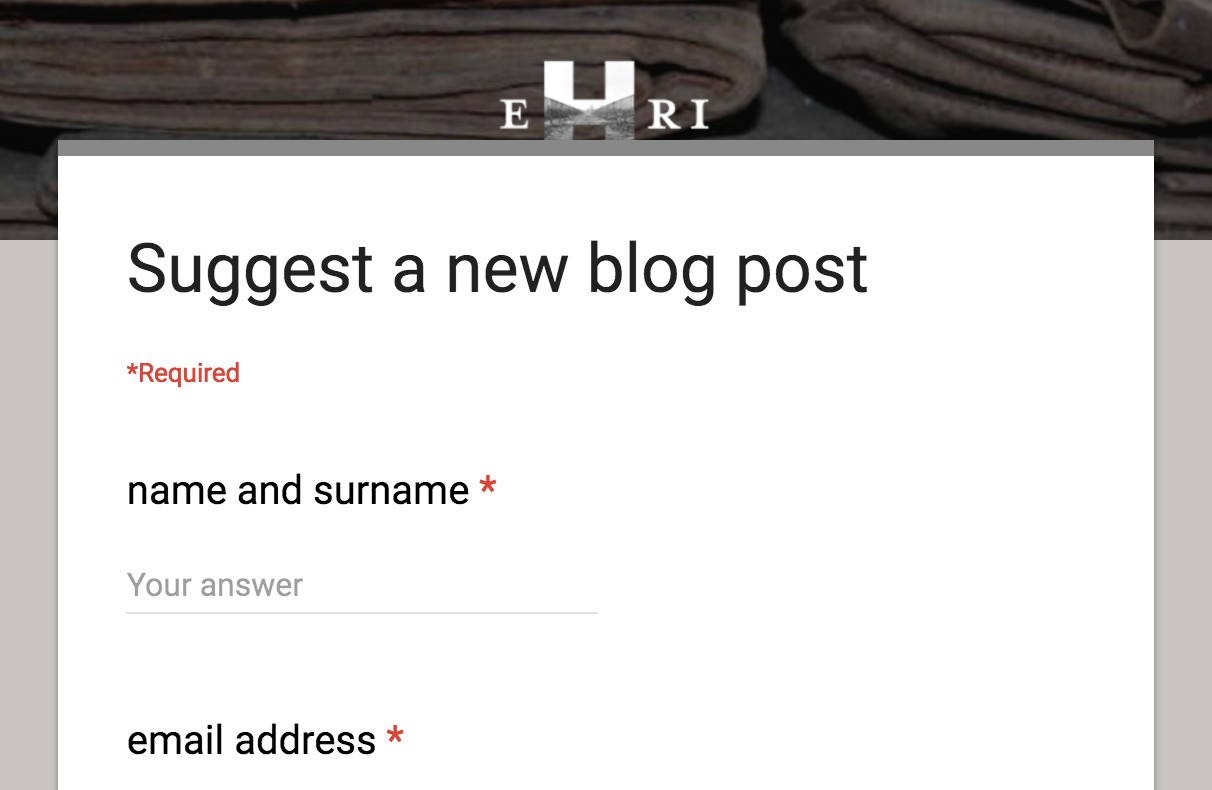The EHRI Document Blog welcomes contributions from researchers of Holocaust Studies, as well as archivists, librarians and digital humanists. There are no fixed conventions or limitations for blog contributions; it is an experimental space. The blog combines narrative descriptions with document metadata and references to relevant collections descriptions in the EHRI Portal.
Contributors are also invited to present questions or open-ended issues related to their research. All types of material, including textual documents, photos, audio-visual material, oral histories, etc., can be discussed in the EHRI Document Blog. Typically starting from an individual document, a collection or a type of documents, the contributions present ongoing research and ask questions pertaining to provenance, archival history and interpretation. The articles can offer insights into the challenges of a research process related to accessibility or interpretation of sources, for instance – and significantly for EHRI – due to fragmentation of Holocaust archives amongst multiple holding institutions. Contributors can – but don’t have to – build visualisations that enhance the reader’s understanding of the meaning, structure and contexts of such documents.
These materials can stem from any of the EHRI partner organisations or any other archive, but permission has to be sought from the hosting organisation before sharing scans of the items online. An emphasis on the archival history of the document or the collection is welcome.
How to create your own blog post
 Think of an idea for your blog post. Which way do you want to tell your story? Consider, among many others, the following questions as your starting points:
Think of an idea for your blog post. Which way do you want to tell your story? Consider, among many others, the following questions as your starting points:
-
- What is the historical background/story and archival provenance of the document(s)? Is something missing from this document (intentionally censored/removed or lost)?
- Was it difficult to find this document? Was the search itself enlightening?
- How might this document be useful for conducting future research?
- What contextual information can help researchers understand the document’s content or structure?
- Does the document tie to any significant anniversaries (eg. liberation of Auschwitz) or month-long observances (eg. Women’s History Month), which can aid in promoting your post at a specific point in time?
- Prepare the media needed for the article and make sure you know how to address any copyright and privacy protection issues.
- Fill in a short description of your intended blog contribution in an online form.
- Discuss next steps: a member of the EHRI Document Blog team will contact you with further information and – if your article is accepted – will discuss your idea with you as well as what visualisations, if any, are needed.
- Work with the EHRI Document Blog team: we follow the agile development paradigm and are happy to assist you with the technical aspects of the contribution.
How we do this?
- The blog is published using the widely used free and open-source content management system WordPress.
- Visualisations (which we support) are created using an Omeka plugin called Neatline. See our detailed manual here.
- We store the document metadata in the EHRI Document database using a detailed archival description (using Omeka), which is based on the Dublin Core standards. See our detailed manual here.
- Wherever possible, we link to archival descriptions available in the EHRI portal. We use an EHRI data plugin for WordPress.
Visualisations
The contributors are encouraged to think about how different types of digitally supported visualisations can enhance their analysis of the document(s) or better explain their interpretation to the public. They can use a number of different methods, which can be embedded (or even linked to) in the WordPress blog, thereby allowing for flexibility and openness.
The EHRI Document Blog team provides out-of-the-box support for the usage of Omeka Neatline, which includes the plugins and methods described below. This enables the team to support users who want to learn how to use new technologies. (The downside of Neatline is a high learning curve and the necessity to invest a lot of manual work in order to achieve the desired results.)




